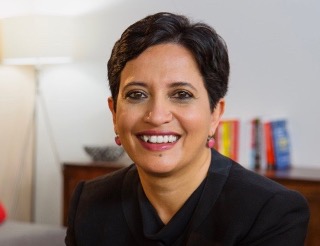Putting China On The Silicon Valley Map: NetScreen And Fortinet Founder Ken Xie (Part 3)
SM: How were you living if you did not make enough money from Stanford Systems?
KX: I also worked full-time jobs. My wife grew up here in Berkeley. I had a family, and I needed to make sure that I made a living. I made good money with consulting. The startup is great, but I needed regular income.
SM: You kept a full-time job while you started NetScreen?
KX: I did the same formula. I did not quit my full-time job. I wanted to keep steady income while I focused on building a better firewall product. It was hard work because I was working 40 hours in a full-time job, was enrolled at Stanford for one or two classes, and spent 20–30 hours per week on the startup.
SM: How long did it take you to get the first product out?
KX: I took one year.
SM: Were you alone doing that?
KX: No, I had two other founders as well. After I realized that our software-based firewall was not working, I realized I needed to start a serious team. I knew security well. I needed someone who knew networking very well, and that is where Yan Ke came in. He was a top engineer at Cisco.
SM: How did you find him?
KX: We were classmates at Tsinghua. Feng Deng knew how to build the hardware and the chips. He was also from Tsinghua.
SM: It is a wonderful networking experience to have a security guy, a networking guy, and a hardware guy all from Tsinghua at different places in the Valley.
KX: That is probably the only time that has happened. The difference between the team at Stanford Systems and NetScreen is that when I was starting NetScreen I had an idea what I wanted to build. Our team was complementary in skill sets. It was a good partnership. One worked for Intel and another for Cisco, and I had worked for Healtheon. We all had stock options there, which also helped.
Because of our backgrounds we knew how to develop. We set a prototype schedule, and we all set a schedule committing to work a set number of hours a week. We also agreed that once we built a prototype that we would need to find a customer. We also agreed that once we found someone to put in money that we would quit our jobs to focus on the company.
SM: When did you actually quit your jobs?
KX: In October 1997. Before that we had spent 12 months building the prototype.
SM: How much value did your various stock options in Cisco, Intel and Healtheon have?
KX: We all gave up over $1 million.
SM: Were you able to cash in some of the options?
KX: We were able to cash in enough of the options so that if we had no income we would be able to survive for two years.
This segment is part 3 in the series : Putting China On The Silicon Valley Map: NetScreen And Fortinet Founder Ken Xie
1 2 3 4 5 6 7
Featured Videos
Can 1M/1M Help Me Raise Money?
How Does 1M/1M Democratize Entrepreneurship Education?
How Does 1M/1M Democratize Management Consulting?
When Is The Right Time To Join 1M/1M?
Can 1M/1M Help Me With Business Development?
Can 1M/1M Help Me With Market Sizing?
Can 1M/1M Help Me Validate My Product?
Will I Have Private 1-on-1 Sessions In 1M/1M?
How Does 1M/1M Help Entrepreneurs Connect With Silicon Valley?
Mentoring or Consulting?
Why Does 1M/1M Charge $1000 a Year?
Why Does 1M/1M Partner With Local Organizations?
Why Don\’t Mentoring Networks Work?
Why Is It Important To Study With 1M/1M Now?
Dan Stewart Story
Vikrant Mathur Story
